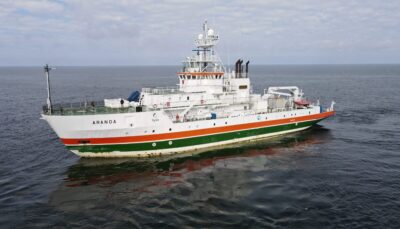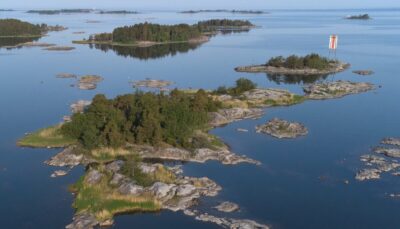The United Nations gathers to discuss the future of multilateralism

Text:
The pace of reaching sustainable development goals is too slow. This is what the 79th session of the United Nations General Assembly addressed from 10 to 24 September. A part of the session was “The Summit of the Future”, a highly anticipated chance for the United Nations (UN) member states and organizations to build understanding on how to better respond to current and future challenges. As an expected result after the long multilateral negotiations, a non-binding “Pact for the Future” was adopted by the UN member states. This includes action to protect the ocean and seas.
The multilateral system is struggling to fairly and sufficiently handle global issues that require collective responses to safeguard our common future. Multilateralism refers to a shared system of international cooperation between multiple countries, of which the United Nations is an example.
Wars, polarization, and environmental crisis underscore the struggle of handling the emerging challenges. The UN has not been delivering as well as it should, especially regarding inequalities resulting from the global economic system.
Pact for the Future
The Summit of the Future, on 22-23 September, covered a wide range of issues from conflicts and poverty to new technologies and climate change, aiming to build momentum and trust among the UN member states.
The expected outcome of the summit was the adoption of the Pact for the Future, an action plan aiming to improve multilateralism. It focuses especially on the three interconnected issues: sustainable development, peace and security, and human rights.
The Pact states that we are encountered with catastrophic and existential risks to humanity, yet also brings up hope and opportunities in international cooperation.
The Pact aims to, among other things, lead countries towards meeting the sustainable development goals by 2030. Involved in the sustainable development goals, and thus a part of the Pact, is conserving the ocean and seas. The goal number 14 of the sustainable development goals is, in fact, life below water: conserving and sustainably using ocean, seas, and marine resources. Accordingly, the Pact aims to foster sustainable use of the environment and to boost conservation measures and the implementation of existent multilateral environmental agreements.
What is required now, is real action from countries to meet the Pact’s framework.
Building trust
The initiative for the Summit of the Future came from the UN Secretary-General, António Guterres, in the 2021 report Our Common Agenda. The need for trust was highlighted in the report: “This common agenda is our road map to recapture this positive spirit and begin rebuilding our world and mending the trust in one another we need so desperately at this moment in history.”
In addition to being seen to strengthen multilateralism, the Pact has been viewed as an important part of Guterres’ legacy. Alongside with the Pact for the Future, the Summit’s results include two annex documents: the Global Digital Compact, and Declaration on Future Generations.
The UN has described the Pact for the Future as a game-changing “once-in-a-generation opportunity”. Though, the route to adopting the Pact did not go without opposition: during the summit the consensus on adopting the Pact was met with resistance from seven countries, including Russia, who eventually failed to pass a last-minute amendment.

What does the pact mean for the ocean?
Environmental work, including ocean conservation, requires joint efforts. Strengthening international cooperation in protecting our planet is highlighted in the Pact.
The Pact is divided into five parts and two annexes. The first part, Sustainable development and financing for development, includes Action 10 where the member states decide to take action to “accelerate our efforts to restore, protect, conserve and sustainably use the environment.”
The final Pact underscores the urgent need to shift our approach to environmental degradation.
Action 10 includes the need to protect our ocean and seas. It highlights the importance of addressing pollution of the ocean, including in the management of chemicals and plastic pollution. It also stresses the need to implement multilateral agreements to halt and reverse biodiversity loss by 2030.
A key issue in boosting sustainable development is ensuring that the international financial mechanisms stimulate sustainable development in all countries. Understanding and tackling the global economic inequalities is key in creating change towards a better future.
How do the grand words translate to action?
While the Pact is important in the efforts to repair the multilateral system, the agreed Pact needs to be met with fair action that has everyone involved.
Before the summit, Human Rights Watch highlighted the importance of governments to commit to action in order to halt widening economic inequalities and combat climate change. The Pact should not turn out to be just “another UN document” that is not met with enough effort.
The question remains whether the Pact will offer a strong enough platform to spark collaboration and ideas among the member states. And on the other hand, if there will be capacity and willingness of countries to meet their pledges.


